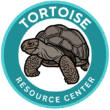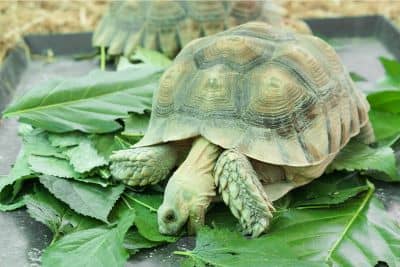How Much Do Baby Sulcatas Need to Eat?
If you’re new to keeping baby sulcata tortoises, you’ve probably found yourself staring at that tiny hatchling wondering, “How much food is too much? How much is too little? Is my baby sulcata eating enough?” It’s one of the most common questions new sulcata keepers ask, and getting the answer wrong can have serious consequences for your tortoise’s health and development.
Here’s the reality: baby sulcatas eat a lot more than you probably expect. These little growing machines have metabolisms that would make a teenager jealous, and their rapid growth requires substantial daily nutrition designed specifically for sulcatas. But there’s a fine line between providing adequate nutrition and overfeeding, which can lead to its own set of problems.
The challenge is that most feeding guides give you vague advice like “feed as much as they can eat in 15 minutes” or “offer food the size of their shell.” While these guidelines aren’t completely wrong, they don’t account for individual variation, growth stages, or seasonal changes that dramatically affect how much your baby sulcata should be eating.
This guide will give you the specific, practical information you need to determine exactly how much your baby sulcata should eat at every stage of development.
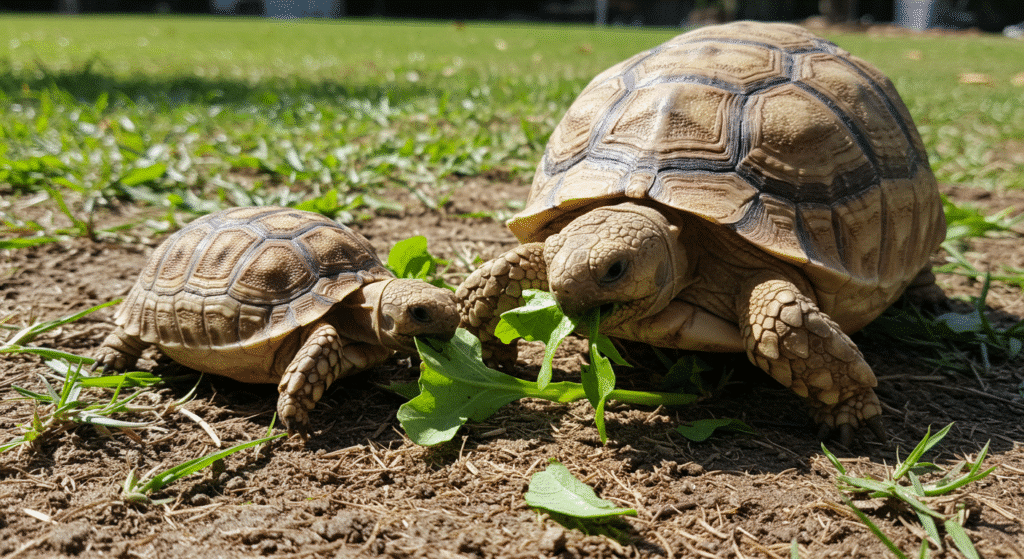
Why Baby Sulcatas Eat So Much More Than Adults
Baby sulcatas aren’t just smaller versions of adult tortoises—they’re completely different animals metabolically. A healthy baby sulcata can double or even triple its weight in the first six months of life. This isn’t just getting bigger; they’re building bone, developing organs, hardening their shells, and establishing the digestive bacteria colonies they’ll need for life.
This explosive growth requires massive amounts of energy and nutrients relative to their body size. While an adult sulcata might eat 2-3% of its body weight daily, a baby sulcata can easily consume 8-12% of its body weight in food every single day.
To put this in perspective, if you weighed 150 pounds and ate like a baby sulcata, you’d be consuming 12-18 pounds of food daily. It sounds impossible, but that’s the reality of supporting rapid tortoise growth.
Age-Based Feeding Guidelines: How Much Do Baby Sulcatas Need to Eat?
Hatchlings (0-3 months): At this stage, your baby sulcata weighs between 15-45 grams and is in its most rapid growth phase. Daily food intake should be approximately 10-15% of body weight. At this stage, it’s critical that you feed a diet designed specifically not only for sulcatas, but for baby sulcatas. Try our Baby Sulcata Superfood Powder today to make sure your tortoise is getting exactly what it needs for healthy growth.
For a 30-gram hatchling, this means offering 3-4.5 grams of food daily. That might not sound like much, but remember—this is a tortoise smaller than a tennis ball eating the equivalent of its own head in food every day.
Young Juveniles (3-6 months): Weight range: 45-150 grams. Daily food intake should be 8-12% of body weight. A 100-gram tortoise at this stage should receive 8-12 grams of food daily.
Older Juveniles (6-12 months): Weight range: 150-400 grams. Daily food intake can be reduced to 6-10% of body weight as growth rates begin to slow slightly. A 250-gram tortoise should receive approximately 15-25 grams of food daily.
Yearlings (12-18 months): Weight range: 400-800 grams. Food intake stabilizes at 4-8% of body weight. A 600-gram yearling should receive about 24-48 grams of food daily.
Visual Portion Guidelines That Actually Work
Since most people don’t want to weigh food daily, here are visual guidelines that correspond to the weight-based recommendations:
Shell Size Rule: For hatchlings and young juveniles, offer food equal to about 1.5 times the area of their shell. This accounts for the high metabolic needs during rapid growth phases.
Feeding Container Method: Use a shallow dish that’s about twice the diameter of your tortoise’s shell. Fill it with food, and your baby sulcata should be able to finish 70-80% of what you offer within 2-3 hours.
Body Depth Measurement: Pile food to a depth roughly equal to half the height of your tortoise’s shell. This provides a good visual reference that scales with your tortoise’s size.
Daily vs. Every-Other-Day Feeding
Most care guides recommend daily feeding for baby sulcatas, but the reality is more nuanced:
Daily Feeding is Best For:
- Hatchlings under 6 months
- Tortoises showing slow growth rates
- During active growing seasons (spring/summer)
- When environmental temperatures are consistently optimal
Every-Other-Day Feeding Works For:
- Juveniles over 8-10 months old
- During cooler months when metabolism slows
- If your tortoise is gaining weight too rapidly
- When using high-nutrition commercial supplements like our Baby Sulcata Superfood Powder, which provides concentrated nutrition that can support healthy growth with less frequent feeding
The key is monitoring your tortoise’s growth rate and body condition rather than following a rigid schedule.
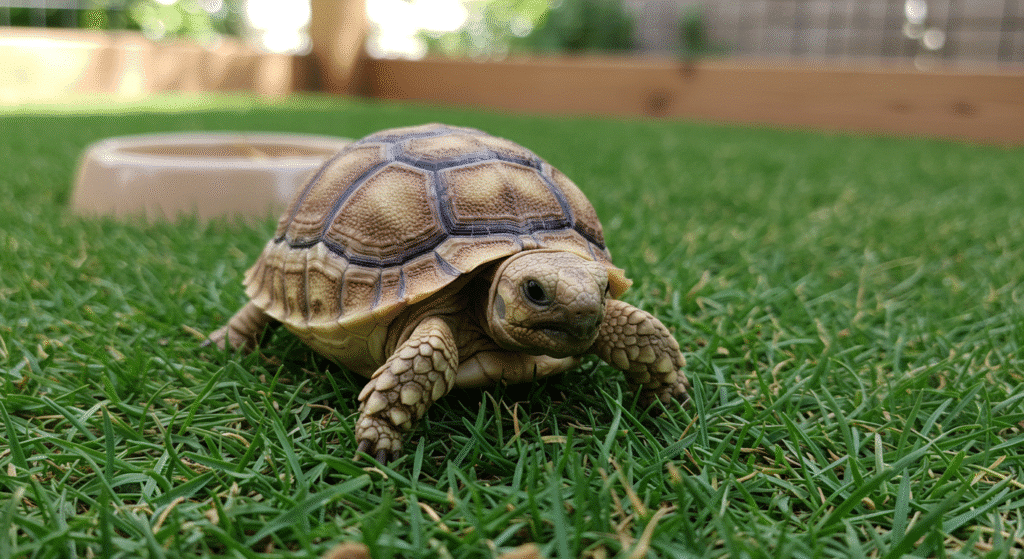
Signs You’re Feeding the Right Amount
Steady, Consistent Growth: Your baby sulcata should gain weight consistently but not explosively. Rapid weight gain can lead to pyramiding and other developmental problems.
Active, Alert Behavior: Well-fed baby sulcatas are active, curious, and responsive to their environment. They should show interest in exploring and basking.
Healthy Shell Development: The shell should feel firm but not rock-hard. New growth should be smooth and even, without raised or pyramid-shaped scutes.
Normal Elimination: Well-fed tortoises produce regular, well-formed waste. The frequency will vary based on feeding schedule and individual metabolism.
Good Body Weight Distribution: When viewed from above, your tortoise should have a rounded appearance without visible fat deposits around the neck and legs, but also without a pinched or narrow look.
Red Flags: Signs of Overfeeding
Rapid Weight Gain: If your baby sulcata is doubling in size every 4-6 weeks, you’re probably overfeeding. Healthy growth is steady but not explosive.
Pyramiding: Raised, pyramid-shaped scutes often indicate overfeeding combined with low humidity. The shell should grow outward, not upward.
Lethargy: Overfed tortoises often become sluggish and less active. They may spend excessive time sleeping or hiding.
Soft Shell Areas: Rapid growth from overfeeding can cause shell deformities and soft spots that should be firm.
Fat Deposits: Visible fat around the neck, legs, or tail area indicates significant overfeeding.
Are You Starving Your Tortoise?
Save 10% on premium tortoise food and supplements from Tortoise Resource Center on Amazon now using code BUYNOWGET10
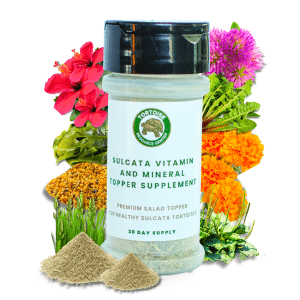
Sulcata Vitamin & Mineral Topper Supplement
30-Day Supply | 2 oz (56 g)
$24.99
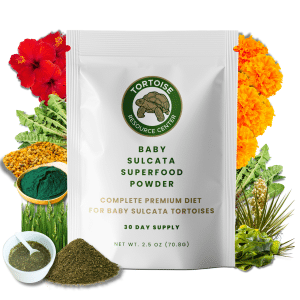
Baby Sulcata Tortoise Superfood Powder
30-Day Supply | 2.5 oz (70.8 g) Bag
$24.99
Red Flags: Signs of Underfeeding
Stunted Growth: If your baby sulcata isn’t gaining weight or growing visibly over several weeks, feeding amounts may be inadequate.
Excessive Aggression: Hungry tortoises often become food-aggressive, rushing toward any movement near their enclosure.
Shell Abnormalities: Severe underfeeding can cause irregular shell growth patterns and developmental delays.
Lethargy and Weakness: Underfed tortoises lack energy for normal activities and may seem weak or unsteady.
Constant Food-Seeking Behavior: While some food interest is normal, constantly searching for food or trying to eat substrate can indicate insufficient nutrition.
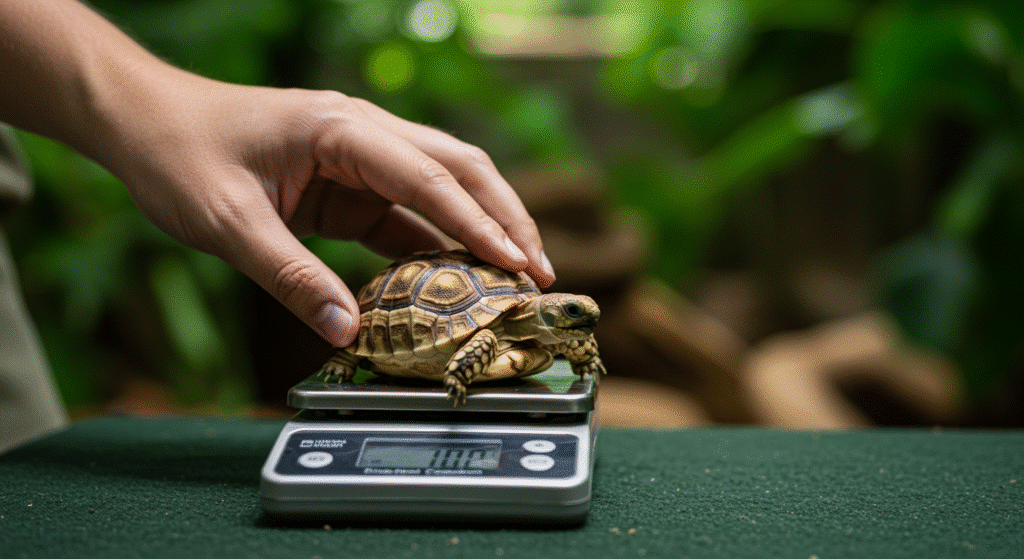
Adjusting Feeding Amounts Based on Individual Factors
Temperature Effects: Baby sulcatas eat significantly more when temperatures are optimal (85-95°F basking area). During cooler periods, reduce feeding amounts by 20-30% to match their slower metabolism.
Seasonal Variations: Many baby sulcatas naturally eat more during spring and summer growing seasons. Fall and winter feeding may need to be reduced, especially if you’re allowing natural temperature fluctuations.
Individual Metabolism: Some tortoises are naturally more active and require more food, while others have slower metabolisms. Monitor individual body condition rather than following generic guidelines blindly.
Health Status: Recovering tortoises or those with health issues may need adjusted feeding amounts. Always consult with a reptile veterinarian for specific medical situations.
Quality vs. Quantity: Making Every Bite Count
Rather than focusing solely on volume, consider the nutritional density of what you’re offering. High-quality foods and supplements can provide better nutrition in smaller amounts.
Nutrient-Dense Base Foods:
- Fresh dandelion greens (entire plant)
- Collard greens
- Mustard greens
- Young, tender grasses
Supplementing for Maximum Nutrition: Using targeted supplements like our Vitamin and Mineral Topper can help ensure your baby sulcata gets complete nutrition even if food quantities need to be adjusted for individual circumstances.
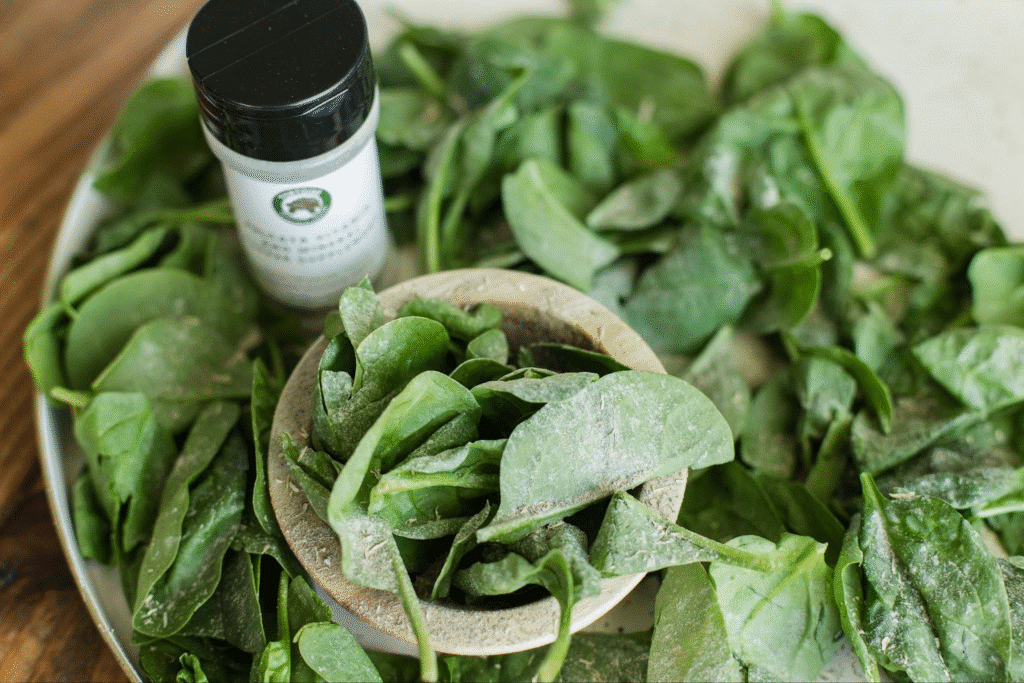
Feeding Schedule Strategies
Option 1: Single Large Meal Offer the entire daily portion in one feeding, typically in the morning when temperatures are rising. This works well for most baby sulcatas and simplifies care routines.
Option 2: Split Feeding Divide the daily portion into two smaller meals, offered 4-6 hours apart. This can be helpful for very young hatchlings or tortoises with digestive sensitivities.
Option 3: Free-Choice Feeding Leave appropriate amounts of food available throughout the day, allowing your tortoise to graze naturally. This works best with foods that don’t spoil quickly and in enclosures with proper temperature control.
Common Feeding Amount Mistakes
Mistake #1: Following Adult Guidelines Adult feeding recommendations are completely inappropriate for babies. Don’t reduce portions just because care sheets suggest adults eat less.
Mistake #2: Fear of Overfeeding Many new keepers are so afraid of overfeeding that they don’t provide enough nutrition for proper growth. Baby sulcatas need substantial food quantities.
Mistake #3: Inconsistent Portions Feeding huge amounts one day and tiny portions the next stresses young tortoises. Consistency is more important than perfect quantities.
Mistake #4: Ignoring Individual Needs Not all baby sulcatas grow at the same rate or have the same appetite. Adjust feeding based on your specific tortoise’s needs.
Mistake #5: Not Accounting for Temperature Feeding the same amounts regardless of environmental conditions can lead to digestive problems or inadequate nutrition.
Monitoring Growth and Adjusting Portions
Weekly Weigh-Ins: For baby sulcatas under 6 months, weekly weighing helps track growth patterns and adjust feeding as needed. Use a digital kitchen scale accurate to at least 1 gram.
Monthly Measurements: Measure shell length and width monthly to track overall development. Healthy babies should show consistent increases in both dimensions.
Body Condition Scoring: Learn to assess your tortoise’s body condition by feel and appearance. This becomes more important than absolute weight as they grow.
Photographic Records: Monthly photos from consistent angles help track development and identify potential problems early.
Transitioning to Adult Feeding Amounts
When to Begin Transition: Most sulcatas can begin transitioning to adult feeding patterns around 18-24 months, but this varies significantly based on individual development.
Gradual Reduction: Reduce feeding amounts gradually over 2-3 months rather than making sudden changes. Monitor growth rates and body condition throughout the transition.
Adult Feeding Targets: Adult sulcatas typically eat 2-4% of their body weight daily, a dramatic reduction from baby feeding amounts.
Emergency Feeding Situations
What to Do if Your Tortoise Won’t Eat: If your baby sulcata refuses food for more than 2-3 days, this is a veterinary emergency. Young tortoises can’t survive extended fasting periods like adults can.
Backup Feeding Options: Always have emergency food sources available: frozen vegetables, high-quality commercial foods, and reliable supplements that can provide nutrition when fresh options aren’t available.
When to Seek Professional Help: Contact a reptile veterinarian immediately if your baby sulcata shows signs of rapid weight loss, refuses food for multiple days, or exhibits other concerning symptoms.
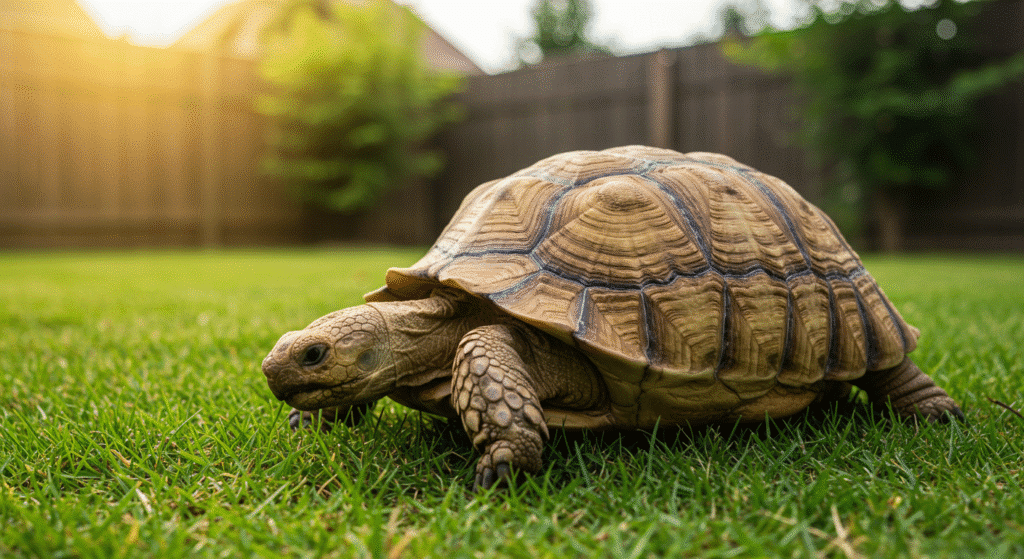
The Long-Term Impact of Proper Feeding Amounts
Getting feeding amounts right during the critical first year of life sets the foundation for your sulcata’s entire future. Baby sulcatas that receive appropriate nutrition during this period develop:
- Proper shell formation without deformities
- Strong bone density that lasts for life
- Healthy organ development
- Robust immune systems
- Appropriate growth rates that support longevity
The time and attention you invest in proper feeding now will pay dividends for the next 50+ years of your tortoise’s life.
Creating Your Personal Feeding Plan
Every baby sulcata is different, and your feeding plan should reflect your specific tortoise’s needs, your schedule, and your available food sources. Start with the guidelines provided here, then adjust based on:
- Your tortoise’s individual growth rate
- Environmental conditions in your setup
- Seasonal availability of foods
- Your daily schedule and routine
Remember, consistency matters more than perfection. A good feeding plan that you can maintain long-term is better than a perfect plan that you can’t sustain.
Your baby sulcata is depending on you to provide the nutritional foundation for a long, healthy life. With careful attention to feeding amounts and consistent monitoring, you can ensure your tortoise gets exactly what it needs to thrive and develop into the magnificent adult it’s meant to become. Try our baby sulcata superfood and vitamin topper to support your tortoise’s growth. You can even save 10% with Coupon code BUYNOWGET10 on our products on Amazon today!
